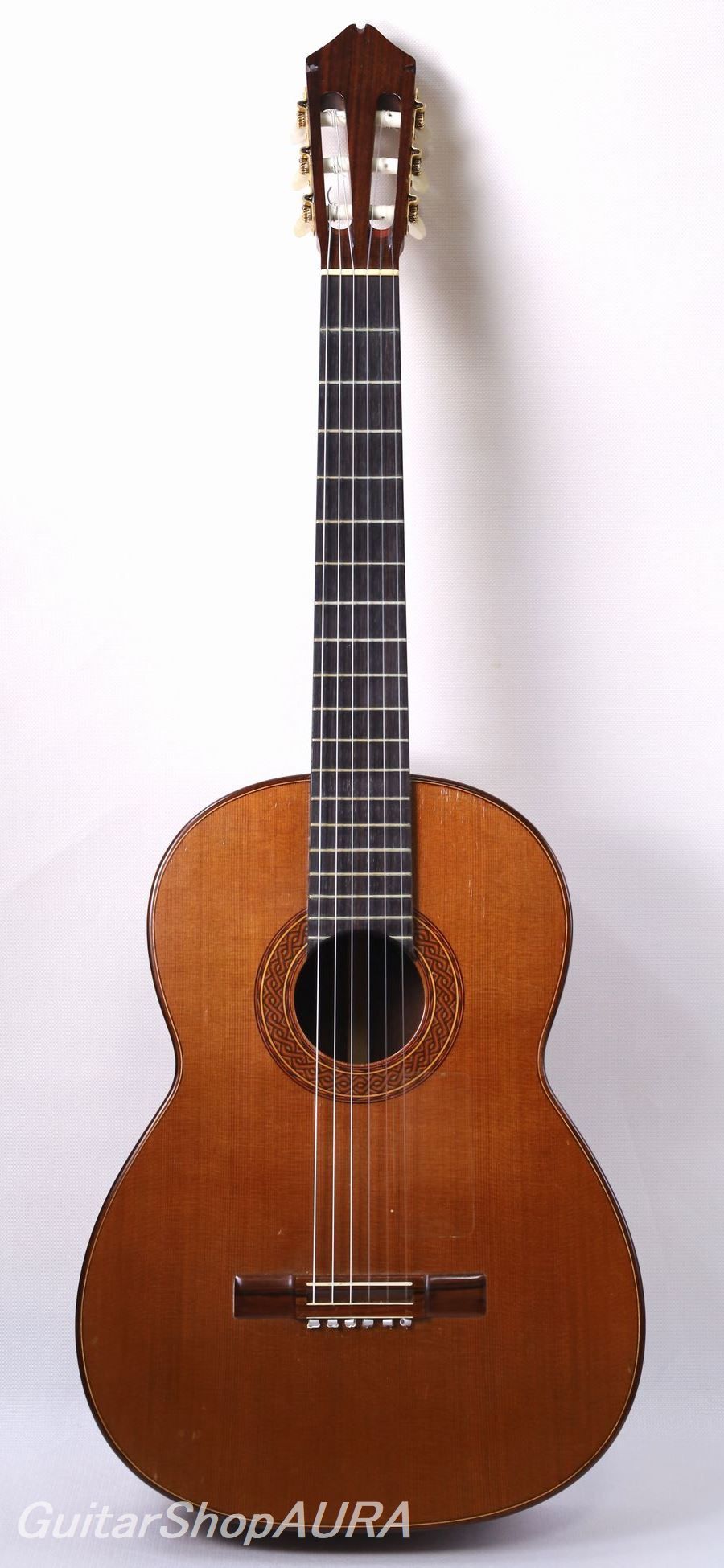
| Instrument | Greg Smallman |
| Category | Imported Classical Guitars 〔Used〕 |
| Number/Model | |
| Scale length | 650mm |
| Country | Australia |
| Year | 1989Year |
| Top | Solid Ceder |
| Side&Back | Solid South American Rosewood |
| Condition※ | 7 |
| List price | INQUIRE |
| Price (tax included) | Please Inquire |
| option | with Hardcase |
Click to enlarge the photos below
Neck:Mahogany
Fingerboard:Ebony
Finish:Lacquer
Tuning Machine:SCHALLER
String height:1string 3.0mm/6string 4.0mm
[Profile]
Greg Smallman was born in Australia in 1947. After Torres, he was the maker who made the greatest innovation in the design of classical guitars. The bars of the sound board arranged in a grid pattern called the lattice system and the structure of the strut processed like modern architecture are extremely unique. It is made with a completely different idea from the basic structure so far. In addition, by making the sound board thin and the back and sides thick arch-shaped, he succeeded in maximizing the vibration of the sound board,resulting in the reaction, volume, and each of the sound output. The balance of the strings,the dynamics and the clear sound that reaches behind the large hall, and the sustain are amazingly improved. The unevenness of the sound due to the resonance setting, which was unavoidable with conventional guitars, has been almost completely eliminated here,
and the overall pitch is set to be more accurate than desired for a nylon guitar. And most notably, even after overcoming these acoustic weaknesses, it does not fall into a mechanical sound and at the same time acquires musical richness. It is clearly demonstrated by the performance of virtuoso John Williams, who found Smallman and formed the second half of his career with Smallman's guitar. After John, many players loved it, and young maestros with modern sensibilities such as J. Perroy and G. Bianco use Smallman. It must be proof that this guitar is both revolutionary and universal.
[Description]
This is a 1989 Greg Smallman model with lattice bracing. Greg Smallman began building guitars in the 1970s and developed his original philosophy into the lattice construction style.
The performances and distinctive acoustics of virtuoso guitarist John Williams using Smallman guitars quickly changed the way guitars were made and played on stage. Today,lattice structures vary from maker to maker and from country to country, but the Australian school, with Smallman as its founder, still maintains a strong market appeal due to its solid theoretical foundation and individuality as the original.
This work is from the early to mid period of Smallman's career, and is an attractive work that shows his strong preference for instruments that sing like the Spanish guitar, to which he was originally devoted. The back and sides are thick, and the sound board is extremely thin. The sound board is firmly fixed to the columns, creating a unique acoustic effect.
The top is made of Western Red Cedar, which is still the standard specification, and the back and sides are made of Central and South American rosewood, which is full of rustic charm. The top is finished with shellac, and the back and sides are lacquered.
There are no cracks or other major repairs. There are scratches, rubs, and dings commensurate with its age. There is a history of fret replacement and fingerboard adjustment. There is no armrest installed.